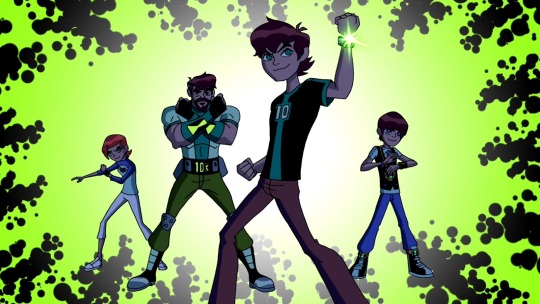#Peter A. Levine
Text
Trauma is not what happens to us, but what we hold inside in the absence of an empathetic witness.
Peter A. Levine, In an Unspoken Voice: How the Body Releases Trauma and Restores Goodness
#Peter A. Levine#life struggles#cptsd#trauma#fighting battles#traumatised#complex trauma#complex ptsd#please understand
190 notes
·
View notes
Text
Little Book Review: Nonfiction Round-Up (May-December 2022)
Waking the Tiger by Peter A. Levine (1997): a self-help book with a somatic approach to dealing with trauma symptoms. It contained some advice that was useful at my old job. Unfortunately, I was too traumatized from said job to concentrate properly on the audiobook, so I was kind of in a Catch-22.
The Nineties by Chuck Klosterman (2022): A deliciously disconcerting series of essays about the fractured last decade of the twentieth century. It wins the coveted "book I'm most determined to lend to my mom" award.
Yes, I'm Hot in This by Huda Fahmy (2018): a cute collection of comics from Fahmy's Instagram, covering subjects from strangers being stupid about her hijab (hence the title) to lighthearted scenes of domestic life. I found it in a Little Library.
Unmask Alice by Rick Emerson (2022): an exploration of the life and writing career of Beatrice Sparks, author of multiple "real" diaries by troubled teens, through-and-through grifter, and coiner of the immortal phrase "freak wharf." This fucked, y'all. Emerson seamlessly delves into multiple topics of interest--Sparks's hardscrabble youth, the discovery of LSD, the Satanic Panic--with plenty of compassion and humor.
The Good Nurse by Charles Graeber (2013): the true-crime account of Charles Cullen, a Pennsylvania/New Jersey nurse who murdered possibly hundreds of patients by poisoning their IV bags in the late 1980s to early 2000s. The subject matter is shocking, and it's horrifying how the indifference of the large medical systems he worked for kept him from facing consequences other than getting fired for years. The style/organization of the book is kind of pedestrian, though.
Catch and Kill by Ronan Farrow (2019): an account of Farrow's efforts to write a story for NBC about the decades-long sexual predation of producer Harvey Weinstein, including NBC's sideways attempts to get him to back off. Farrow's a solid narrative writer, not great, and the book gets less interesting when he strays beyond the inner workings of NBC.
Slouching Towards Bethlehem by Joan Didion (1968): In her first collection of essays, Didion talks about murder, movies, mental distress, and Sacramento. It's incredibly fresh in some ways (the essay where she talks about raising her daughter away from her extended family) and incredibly dated in others (her incredulity at people who ascribe artistic vision to Meet Me in St. Louis). I genuinely appreciate her ability to make me go "girl, what are you even talking about."
Solutions and Other Problems by Allie Brosh (2020): an illustrated memoir/series of comics, focusing on coping with mental illness and the unexpected loss of a loved one. There are some very funny passages (particularly one involving a troublesome dog), some devastating ones (Brosh's montage of memories of her late younger sister), and some aimless ones.
Monkey Mind by Daniel Smith (2012): part memoir and part general information about anxiety (the science of it, how different people have written about it through history, etc.). It's more interesting as a memoir. I remember that it had some good advice at the end for managing anxiety, but I don't know for the life of me what it was. Still, I feel like I should give him credit for it.
#little book review#waking the tiger#peter a. levine#the nineties#chuck klosterman#yes i'm hot in this#huda fahmy#unmask alice#rick emerson#the good nurse#charles graeber#catch and kill#ronan farrow#slouching towards bethlehem#joan didion#solutions and other problems#allie brosh#monkey mind#daniel smith
13 notes
·
View notes
Text
[“While studying footage of wild prey animals, I noticed that most animals have a similar physiological process for returning to normal after a narrow escape from death. This process was uncannily reminiscent of the shaking, trembling, and spontaneous breathing that I had watched Nancy move through. (You’ll recall that you met Nancy in the introduction to this book.) I had also observed this process in many shamanic healing rituals performed throughout the world.
You can watch an example of this process from beginning to end on the National Geographic video “Polar Bear Alert,” available at many video stores. In this video, a frightened bear is chased down by an airplane, shot with a tranquilizer dart, surrounded by wildlife biologists, and then tagged. As the massive animal comes out of its state of shock, it begins to tremble lightly. The trembling intensifies steadily, then peaks into a nearconvulsive shaking — its limbs flail seemingly at random. After the shaking stops, the animal takes deep, organic breaths that spread throughout its body. The biologist narrator of the film comments that the behavior of the bear is necessary because it “blows off stress” accumulated during the chase and capture.
Now here’s the interesting part: When the bear’s response is viewed in slow motion, it becomes obvious that the seemingly random leg gyrations are actually coordinated running movements. It is as though the animal completes its escape by actively finishing the running movements that were interrupted at the moment when it was tranquilized. Then, the bear shakes off the “frozen energy” as it surrenders in spontaneous, full-bodied breaths — just as I had observed with Nancy in her recovery from being overwhelmed as a young child.
As the evidence mounted, I grew increasingly convinced that the healing of trauma — whether it is called “re-association” or, as shamans refer to it, “soul retrieval” — is primarily a biological process or bodily process often accompanied by psychological effects. This is especially true when the trauma involved betrayal by those who were supposed to protect us. Additionally, I surmised that successful healing methods inevitably involve establishing a connection to the body. Those methods that do not enable people to reconnect with their bodies invariably have limited success.”]
peter levine, from healing trauma, 2008
308 notes
·
View notes
Text


The cast / crew of ‘Better Call Saul’ on the picket lines in Los Angeles, California — June 6, 2023.
250 notes
·
View notes
Text
IM GOING INSANE

#cupid parasite#cupid parasite -sweet & spicy darling-#cupipara#gill lovecraft#shelby snail#raul aconite#ryuki f keisaiin#allan melvine#peter flage#merenice levin#look at these mf parasite 7#Gill’s drip tho I’m in love#Ryuki my sweet boi I like him#and Allan— excuse me how r u this fine#I love everyone’s outfit it’s so cool!#otome game#fandisc#wish I have enough cash to get this TwT
70 notes
·
View notes
Photo










Almost Kiss + Interruptions (1)
#Young Justice#Ben 10 Alien Force#X Men Evolution#The Spectacular Spider Man#Anastasia#Moments#Miss Martian x Superboy#M'gann x Conner#Kevin x Gwen#Jean x Scott#Peter x Gwen#Anastasia x Dimitri#Miss Martian#M'gann M'orzz#Superboy#Conner Kent#Kevin Levin#Gwen Tennyson#Jean Grey#Scott Summers#Peter Parker#Gwen Stacy
161 notes
·
View notes
Text

Peter Gabriel, 1980 by Tony Levin
50 notes
·
View notes
Photo



Photos by Michael Ventura/Alamy Stock Photo
“Peter was just — you know, he always played the goofy guy in the show, but in real life, although he had a goofy side, he was incredibly intelligent, enormously articulate, kindhearted, always nervous and on the edge of, you know, catastrophe. You know, somebody who had dealt with a fair amount of childhood trauma, the specifics of which I don’t even really know. He sort of got his life together in his thirties, but it really took him kind of the rest of his life to find some [peace]. [...] [He was] a magnetic personality, a truly special soul.” - Michael Levine, Monkee Mania Radio interview show, April 2023
“[Peter] never stopped doing that [counseling people after sobriety]. I remember sometimes… if anybody ever was in trouble, anybody in his — he always went to meetings, whether we were on the road or not, at home, in Connecticut, in Venice, always meetings. And always available to anybody who was in trouble. Sometimes even in the car, he would get a call, or call somebody, and talk to them for an hour, you know, just to try and help them alleviate the stress of dealing with addiction, you know. He was enormously generous with his time. He always was available for that, always.
I’ve never known anybody more generous, and I’ve never known anybody more loyal, you know? And you know what? He was an honest dude. As a matter of fact, he was almost [laughs], he was almost too honest, because he didn’t filter. I think that’s why a lot of people misinterpreted him early on, because he would say what he thought. Or, if you asked him a question, he’d tell you, you know, the truth as he saw it. And in America, we tend to be more involved in, you know, glad-handing and bullshitting people rather than saying, ‘Hey, you know, that wasn’t…,’ whatever. A lot of people don’t do that. And Peter did that. He was a straight shooter, you know, he always said what he thought, and he tried to live by the code that he embraced, you know, which is pretty rare, I think. You know, so he was generous, and loyal, and he just knew how to be a friend. [...] I miss him every day. Every day.” - James Lee Stanley, The Monkees Pad Show
#Peter Tork#Tork quotes#80s Tork#Michael Levine#Peter deserved better#<3#40s Tork#50s Tork#60s Tork#70s Tork#90s Tork#00s Tork#10s Tork#James Lee Stanley#long read#<333#(transcribing James Lee Stanley's comments had me in tears)#can you queue it
77 notes
·
View notes
Photo

#the stepford wives#original#movie poster#movie posters#film#films#william goldman#paula prentiss#nanette newman#katharine ross#peter masterson#movies#poster#ira levin#movie#posters#1975
82 notes
·
View notes
Text
Percy Jackson may have given me a thing for autistic guys who cope with their trauma by being kind assholes but Marco Díaz gave me a thing for tgirls who're simulatously cool as all fuck and the biggest dorks in existence
#they had me down BADDDDDDD AND PERCY STILL DOES LMAO-also i know for a fact the latter would've included gwen stacy if atsv came out earlier#percy jackson#trans marco#minnie díaz#hiccup haddock#peter b parker#zagreus#ichigo kurosaki#jason todd#dick grayson#kyle rayner#marshall lee abadeer#doyle blackwell#kevin levin#edmund pevensie#koriand'r#fuyumi todoroki#orihime inoue#ichihime#fionna campbell#glimmer spop#honey lemon#dolores madrigal#real self shipping hours#autistic girl summer#trans women#transmasc4transfem#💌#good times#letters from summer
33 notes
·
View notes
Photo

- What are you doing?
- I'm looking at my wife.
Birth, Jonathan Glazer (2004)
#Jonathan Glazer#Jean Claude Carrière#Milo Addica#Nicole Kidman#Cameron Bright#Danny Huston#Lauren Bacall#Alison Elliott#Arliss Howard#Anne Heche#Peter Stormare#Ted Levine#Cara Seymour#Novella Nelson#Zoe Caldwell#Harris Savides#Alexandre Desplat#Sam Sneade#Claus Wehlisch#2004
72 notes
·
View notes
Text
Durere este un cuvânt cu greutate ce declanșează sentimente puternice – frică, furie, neputință, panică și chiar mâhnire.
Peter Levine - Eliberaţi de durere
0 notes
Text
Now let’s all thank Ben Ten and Donald Glover for across the spiderverse.


#spiderverse#Ben Ten#Omniverse#Tennyson#Ben Tennyson#gwen tennyson#Gwen Stacy#Kevin Levin#Miles Morales#Peter Parker#Spider-Man#Hobie Brown
49 notes
·
View notes
Text
[“When we are able to access our “body memories” through the felt sense, then we can begin to discharge the instinctive survival energy that we did not have a chance to use at the time of an event. Regardless of what your particular situation is, you can learn to discharge and transform this energy. The discharge can be dramatic and visible, or subtle and quiet. It can be an intense shivering or the slightest sense of inner trembling; or it may be a changing of temperature between hot and cold, between warmth and coolness. Afterwards, you might notice that things fall into place a little easier, or that you’re calmer and more relaxed. Perhaps things that once upset you won’t seem to bother you as much, and you are significantly less critical of yourself. Or, you might experience a subtle deepening of your sense of well-being. It’s also entirely possible that the change may be more profound. Chronic pain may disappear. You might be able to do things that you’ve never before attempted. Your relationships with loved ones and others might become freer and easier. You might experience a surge in your feelings of passion and personal power. When trauma is healed, shift happens.”]
peter levine, from healing trauma, 2008
114 notes
·
View notes
Text
The popular headcanons i'm forced to see all the time as a selfshipper who's mostly into male characters is so ludicrous it's becomes funny.'Obviously he'd [this] and [that],he's a guy!'Like what does that even MEAN😭😂
#we're making gender essentialism into romantic fantasies like it's the ancient times again y'all muy feminist /s /insult#percy jackson#jason todd#dabi#jin bubaigawara#natsuo todoroki#taishiro toyomitsu#obito uchiha#edmund pevensie#kevin levin#peter b parker#miguel o'hara#roy harper#dick grayson#eddie bloomberg#not tagging kyle rayner because he is indeed a GuyTM#wally west#victor stone#zuko#hiccup haddock#mike schmidt#marshall lee abadeer#gary prince#gym leader raihan#champion leon#hobie brown#< platonically#x black!reader#real self shipping hours#summerposting
14 notes
·
View notes
